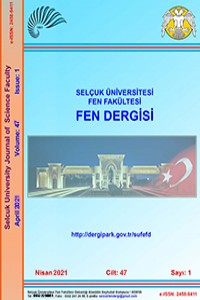Bakır Toksisitesinin Bitkilerde Fizyolojik, Morfolojik, Biyokimyasal ve Transkripsiyonel Düzeydeki Etkileri
Abstract
Bakır (Cu) tüm canlılar için gerekli bir metaldir. Bitkilerde bakır, birçok metalo-protein için temel bir kofaktördür ve çeşitli biyokimyasal ve fizyolojik süreçlere katılır. Ancak farklı konsantrasyonlarda toksik etki oluşturabilir. Bitkiler genelde bakır toksisitesine çok duyarlıdır. Dokulardaki bakır seviyesi normal seviyelerden biraz daha yüksek olduğunda metabolik bozulmalara sebep olurlar ve bitkinin büyümesini engellerler. Yüksek konsantrasyondaki bakır, çok sayıda enzimi inhibe etmektedir; fotosentez, pigment sentezi ve zar bütünlüğü dahil olmak üzere bitki biyokimyasını etkiler. Hücrede biriken bakır, membran lipidlerini içeren peroksidasyon zincir reaksiyonunu başlatan serbest radikallerin üretimine yol açar ve fotosentetik elektron taşınmasının engellenmesine neden olur. Aşırı bakır, reaktif oksijen türlerini (ROS) artırarak bitkilerde oksidatif strese neden olabilir. Bakır, hücresel solunum, yağ asidi ve protein metabolizması ve nitrojen fiksasyonu da dahil olmak üzere bitki fizyolojisi üzerinde geniş bir etkiye sahiptir. Bitkisel büyümede etkili bir inhibitördür ve genellikle yaşlanma semptomlarına neden olur. Bu çalışmada; yüksek konsantrasyondaki bakırın, bitki morfolojisi, fizyolojisi ve biyokimyası üzerindeki etkilerinin yanı sıra, transkripsiyonel seviyede de etkileri incelenmiştir.
References
- ___________________________________________________________________________________________________________________________________________________________________________________________________________________kaynakçalarım fazla olduğundan dolayı buraya koyamıyorum belgede görebilirsiniz______________________________________________________________________________________________________________________________________
Abstract
Copper (Cu) is an essential metal for all living things, in plants copper is an essential cofactor for many metal-proteins and participates in various biochemical and physiological processes. However, it may produces toxic effects in different concentrations. Plants are generally very sensitive to copper toxicity. When the copper level in the tissues is slightly higher than normal levels, they cause metabolic disruptions and inhibit the growth of the plant. High quantity of copper may to lead the inhibition prohibition of many enzymes; it influences plant biochemistry, consisting of photosynthesis, pigment synthesis, and membrane stability. Copper that accumulates in the cell leads to the generation of free radicals triggering the peroxidation chain reaction including membrane lipids and causes the inhibition of photosynthetic electron transportation. Excess copper may lead to oxidative stress in plants by increasing reactive oxygen species (ROS). Copper has a broad effect on plant physiology, including its interaction with fatty acid and protein metabolism, inhibition of cellular respiration and nitrogen fixation. It is an efficient inhibitor of vegetative growth and often causes symptoms of senecence. In this study; in addition to the effects of high concentrations of copper on plant morphology, physiology and biochemistry, its effects at the transcriptional level were also studied.
Keywords
References
- ___________________________________________________________________________________________________________________________________________________________________________________________________________________kaynakçalarım fazla olduğundan dolayı buraya koyamıyorum belgede görebilirsiniz______________________________________________________________________________________________________________________________________
Details
| Primary Language | Turkish |
|---|---|
| Subjects | Structural Biology |
| Journal Section | Research Articles |
| Authors | |
| Publication Date | April 30, 2021 |
| Submission Date | January 9, 2021 |
| Published in Issue | Year 2021 Volume: 47 Issue: 1 |
Cite
Cited By
Variation of Some Plant Growth Parameters in Coriander (Coriandrum sativum L.) with Copper Application
Türkiye Tarımsal Araştırmalar Dergisi
https://doi.org/10.19159/tutad.990602
Journal Owner: On behalf of Selçuk University Faculty of Science, Rector Prof. Dr. Hüseyin YILMAZ
Selcuk University Journal of Science Faculty accepts articles in Turkish and English with original results in basic sciences and other applied sciences. The journal may also include compilations containing current innovations.
It was first published in 1981 as "S.Ü. Fen-Edebiyat Fakültesi Dergisi" and was published under this name until 1984 (Number 1-4).
In 1984, its name was changed to "S.Ü. Fen-Edeb. Fak. Fen Dergisi" and it was published under this name as of the 5th issue.
When the Faculty of Letters and Sciences was separated into the Faculty of Science and the Faculty of Letters with the decision of the Council of Ministers numbered 2008/4344 published in the Official Gazette dated 3 December 2008 and numbered 27073, it has been published as "Selcuk University Journal of Science Faculty" between 2009-2025.
It has been scanned in DergiPark since 2016.

Selcuk Journal of Science is licensed under a Creative Commons Attribution-NonCommercial 4.0 International (CC BY-NC 4.0) License.

